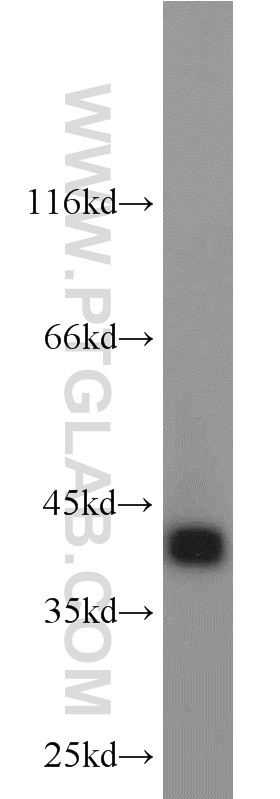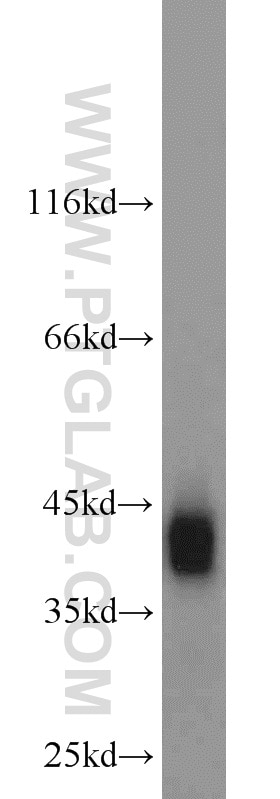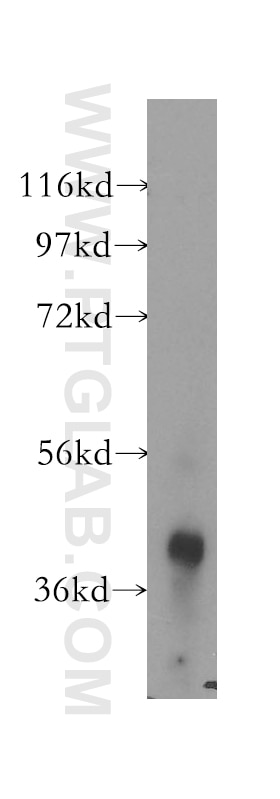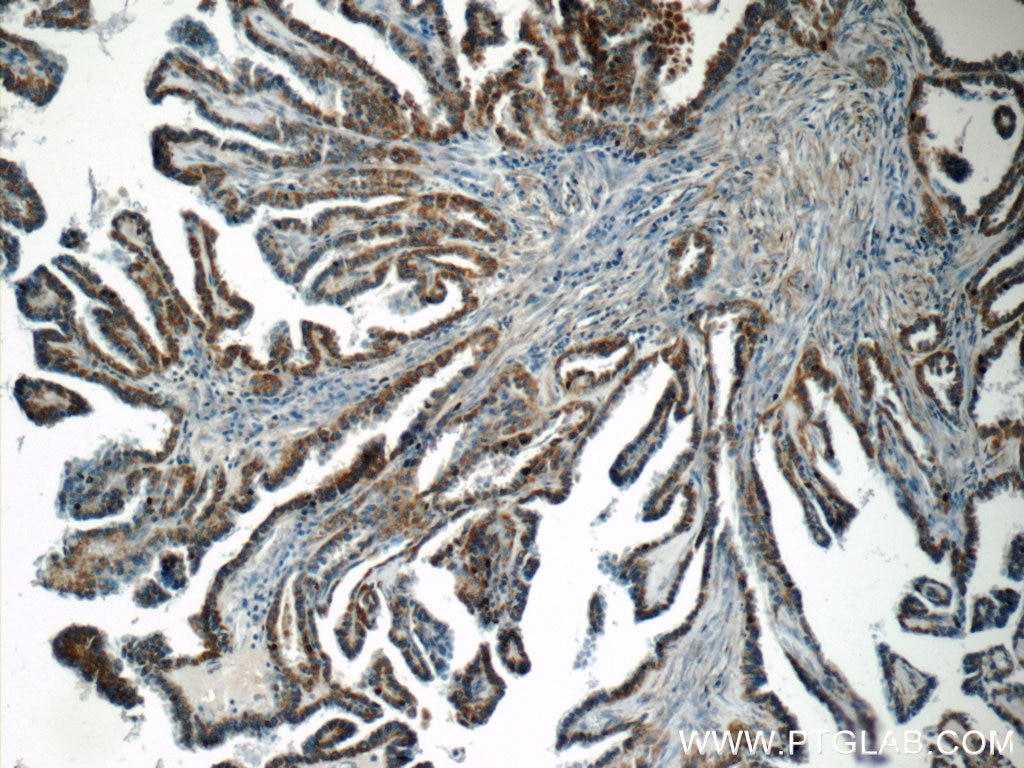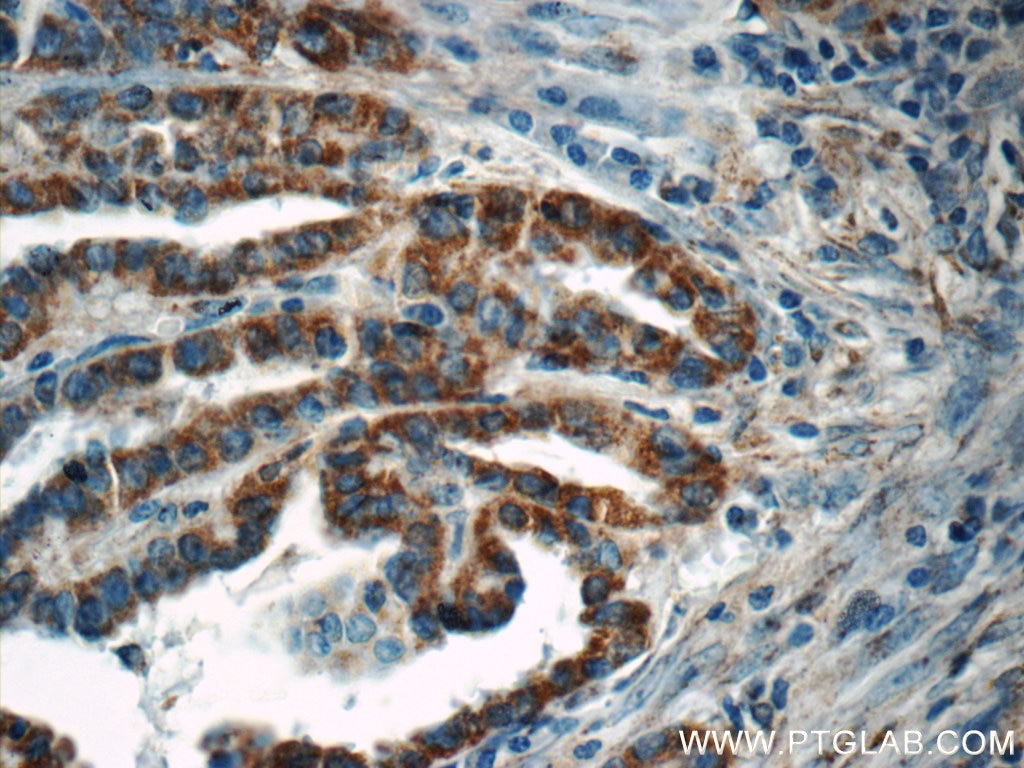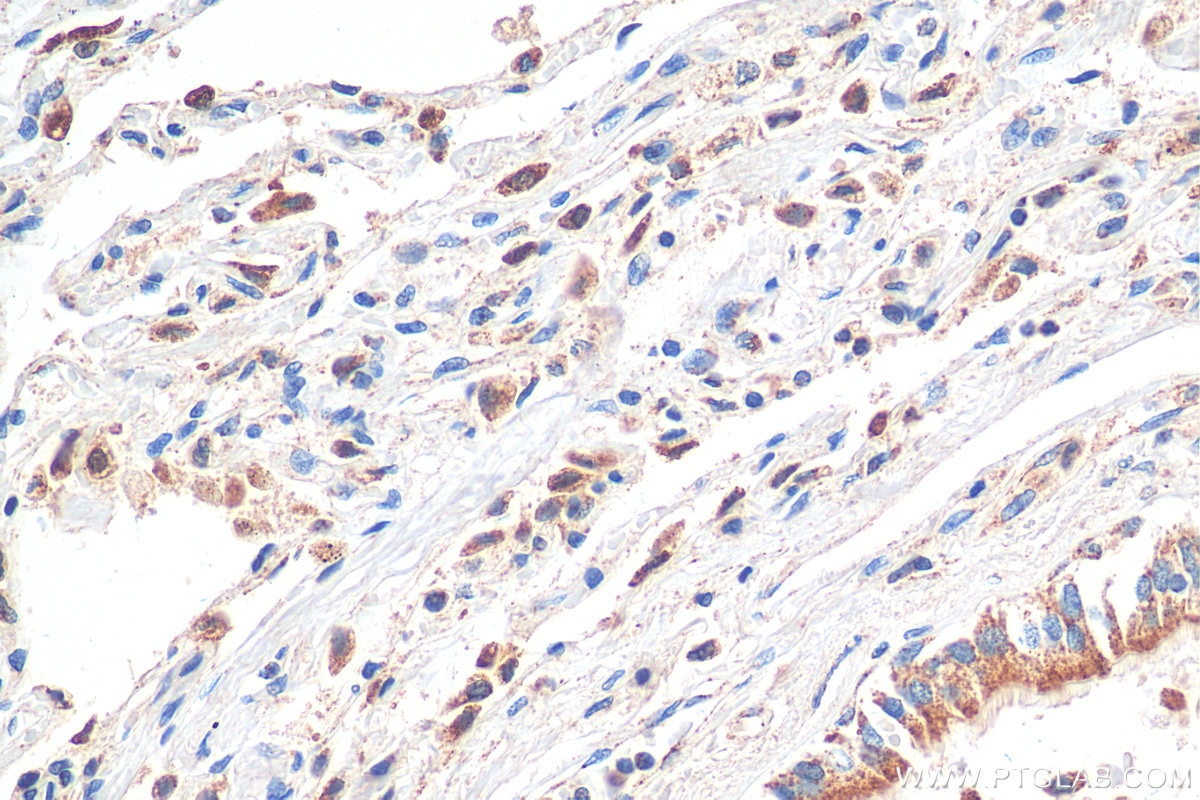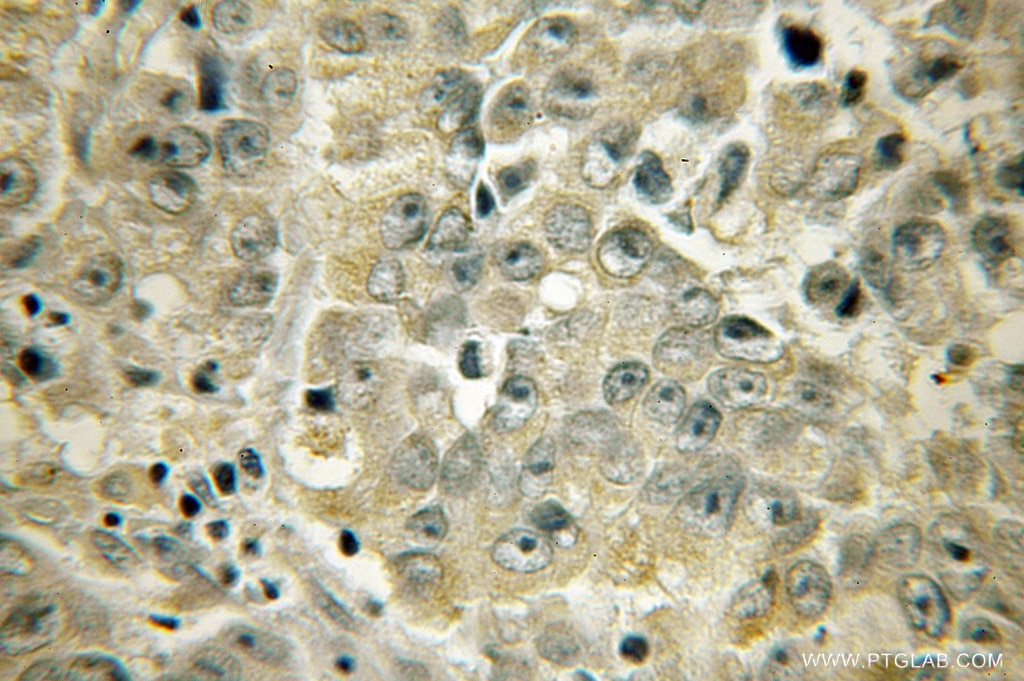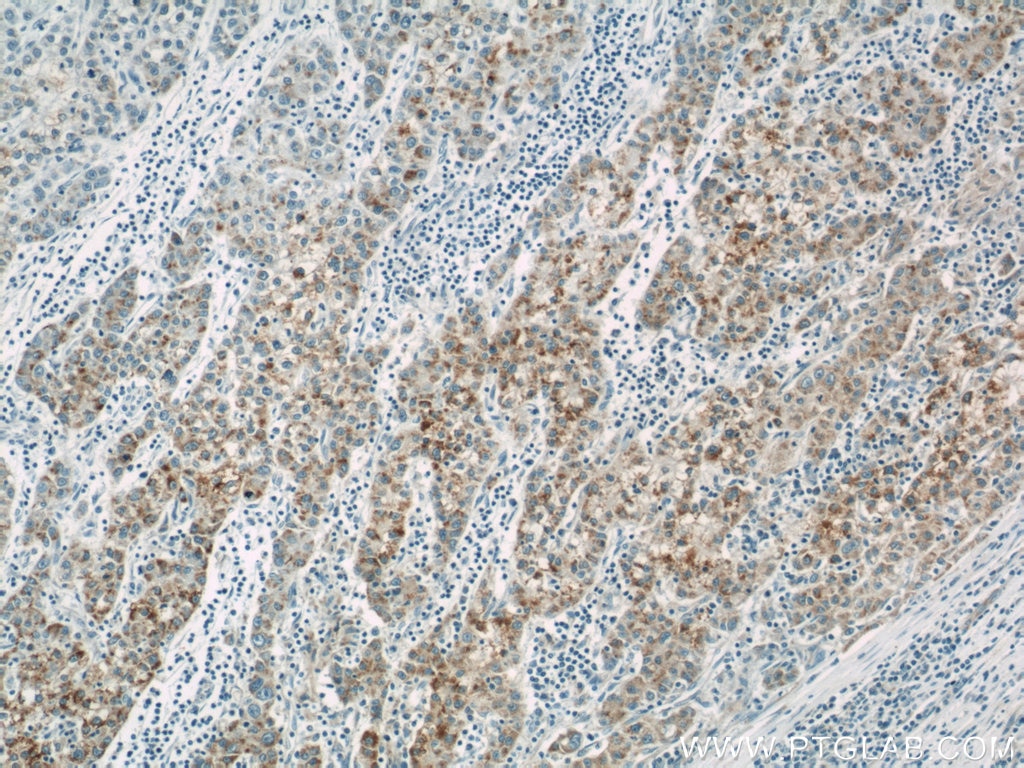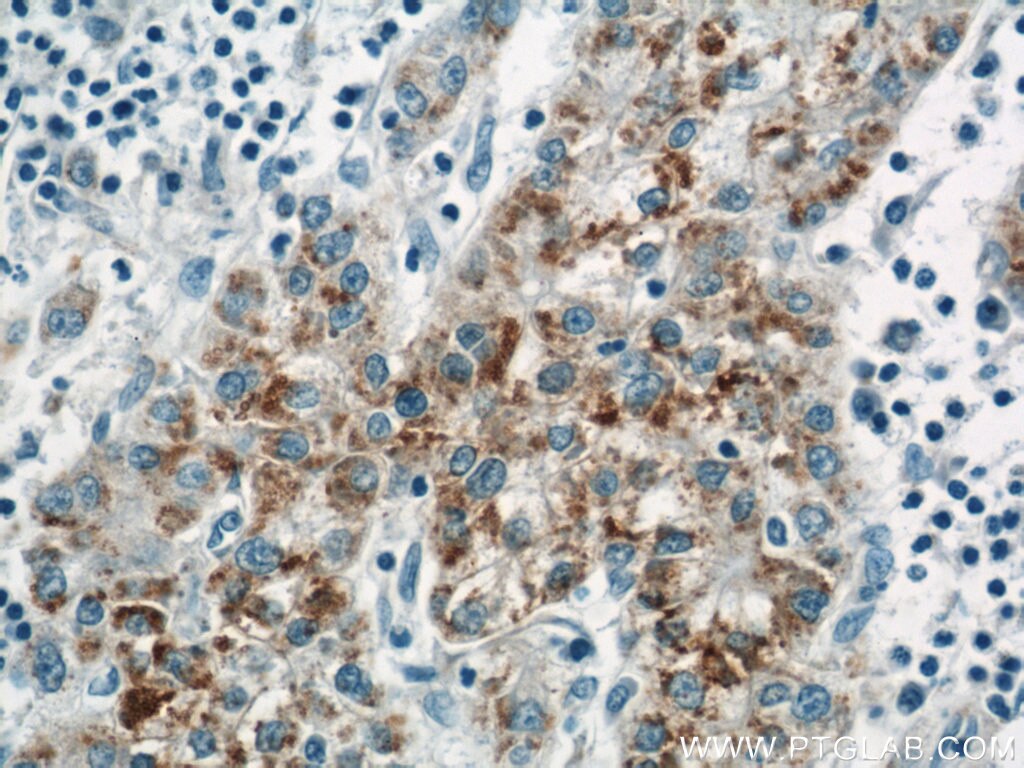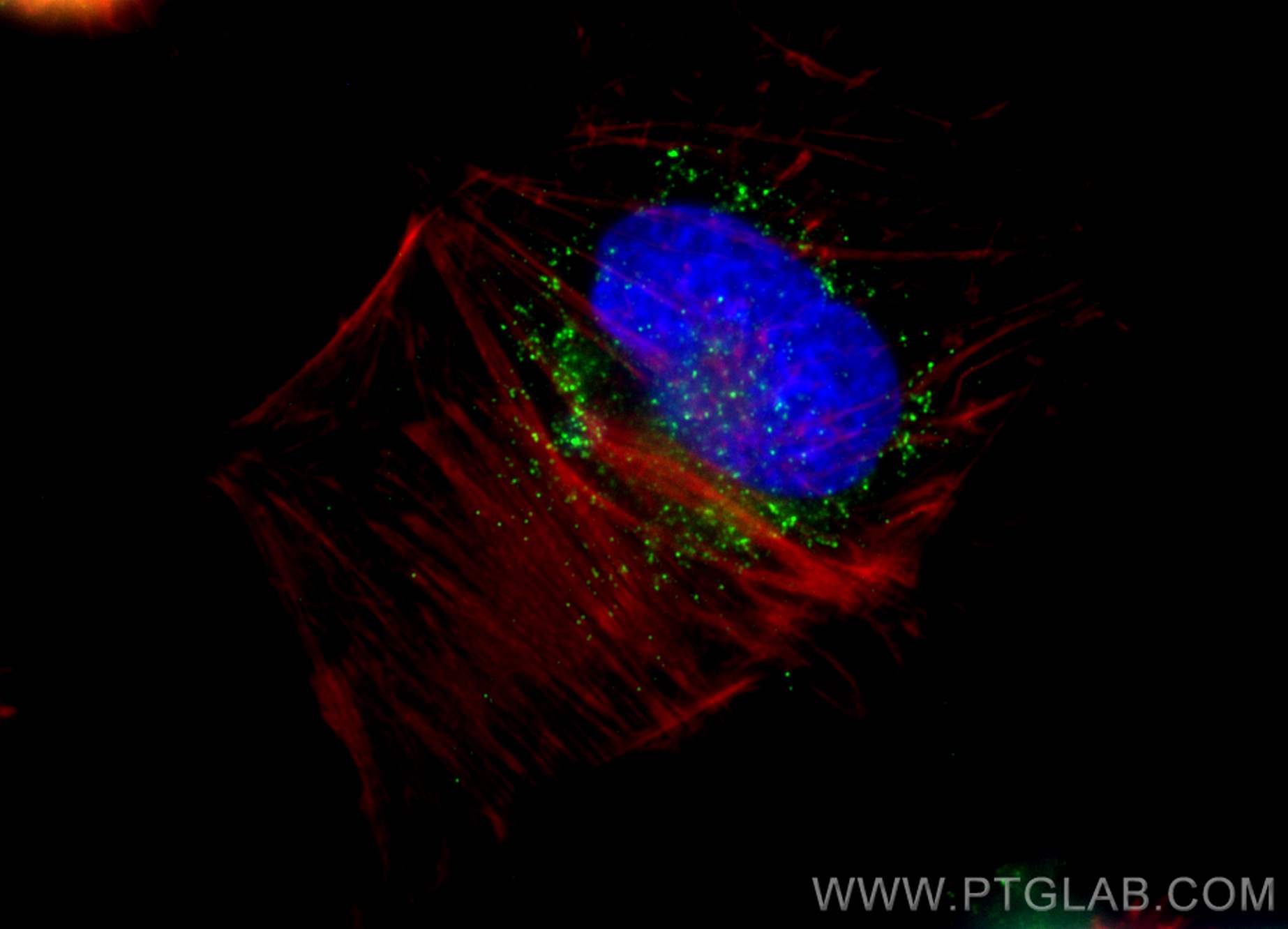Tested Applications
| Positive WB detected in | L02 cells, A549 cells, human lung tissue |
| Positive IHC detected in | human thyroid cancer tissue, human lung tissue, human prostate cancer tissue, human liver cancer tissue Note: suggested antigen retrieval with TE buffer pH 9.0; (*) Alternatively, antigen retrieval may be performed with citrate buffer pH 6.0 |
| Positive IF/ICC detected in | U-251 cells |
Recommended dilution
| Application | Dilution |
|---|---|
| Western Blot (WB) | WB : 1:500-1:2000 |
| Immunohistochemistry (IHC) | IHC : 1:20-1:200 |
| Immunofluorescence (IF)/ICC | IF/ICC : 1:250-1:1000 |
| It is recommended that this reagent should be titrated in each testing system to obtain optimal results. | |
| Sample-dependent, Check data in validation data gallery. | |
Published Applications
| WB | See 12 publications below |
| IHC | See 4 publications below |
| IF | See 4 publications below |
Product Information
12319-2-AP targets ACAA1 in WB, IHC, IF/ICC, ELISA applications and shows reactivity with human, mouse, rat samples.
| Tested Reactivity | human, mouse, rat |
| Cited Reactivity | human, mouse, rat |
| Host / Isotype | Rabbit / IgG |
| Class | Polyclonal |
| Type | Antibody |
| Immunogen | ACAA1 fusion protein Ag2972 Predict reactive species |
| Full Name | acetyl-Coenzyme A acyltransferase 1 |
| Calculated Molecular Weight | 424 aa, 44 kDa |
| Observed Molecular Weight | 41 kDa |
| GenBank Accession Number | BC011977 |
| Gene Symbol | ACAA1 |
| Gene ID (NCBI) | 30 |
| RRID | AB_2289045 |
| Conjugate | Unconjugated |
| Form | Liquid |
| Purification Method | Antigen affinity purification |
| UNIPROT ID | P09110 |
| Storage Buffer | PBS with 0.02% sodium azide and 50% glycerol , pH 7.3 |
| Storage Conditions | Store at -20°C. Stable for one year after shipment. Aliquoting is unnecessary for -20oC storage. 20ul sizes contain 0.1% BSA. |
Background Information
ACAA1 (acetyl-CoA acyltransferase 1) is an enzyme involved in lipid β-oxidation and provides substrates to the tricarboxylic acid (TCA) cycle, a critical step in cellular metabolism (PMID:33194642). ACAA1 is also a biomarker in type 2 diabetes (T2D), predicting the pre-diabetic metabolic signature in mouse models (PMID:25784953). Moreover, ACAA1 is highly expressed in TNBC, serving as a potential therapeutic target in ACAA1-high tumors and a predictive biomarker of resistance to CDK4/6 inhibitors for RB1-proficient patients (PMID:37129951).
Protocols
| Product Specific Protocols | |
|---|---|
| WB protocol for ACAA1 antibody 12319-2-AP | Download protocol |
| IHC protocol for ACAA1 antibody 12319-2-AP | Download protocol |
| IF protocol for ACAA1 antibody 12319-2-AP | Download protocol |
| Standard Protocols | |
|---|---|
| Click here to view our Standard Protocols |
Publications
| Species | Application | Title |
|---|---|---|
Drug Resist Updat MYC expression and fatty acid oxidation in EGFR-TKI acquired resistance | ||
Hum Mol Genet Functional analysis of PEX13 mutation in a Zellweger syndrome spectrum patient reveals novel homooligomerization of PEX13 and its role in human peroxisome biogenesis. | ||
Cell Mol Life Sci Murine deficiency of peroxisomal L-bifunctional protein (EHHADH) causes medium-chain 3-hydroxydicarboxylic aciduria and perturbs hepatic cholesterol homeostasis. | ||
EBioMedicine PPARγ maintains the metabolic heterogeneity and homeostasis of renal tubules. | ||
Commun Biol Transmembrane protein 135 regulates lipid homeostasis through its role in peroxisomal DHA metabolism | ||
J Agric Food Chem Proteomic Analysis of Lysosomal Membrane Proteins in Bovine Mammary Epithelial Cells Illuminates Potential Novel Lysosome Functions in Lactation. |
Reviews
The reviews below have been submitted by verified Proteintech customers who received an incentive for providing their feedback.
FH PAULA (Verified Customer) (07-12-2023) | I tested this ACAA1 antibody on THP1 cells (20 ug total cell lysate) and two nice bands were observed at the most concentrated dilution (1:250), although they were located slightly below the predicted molecular weight.
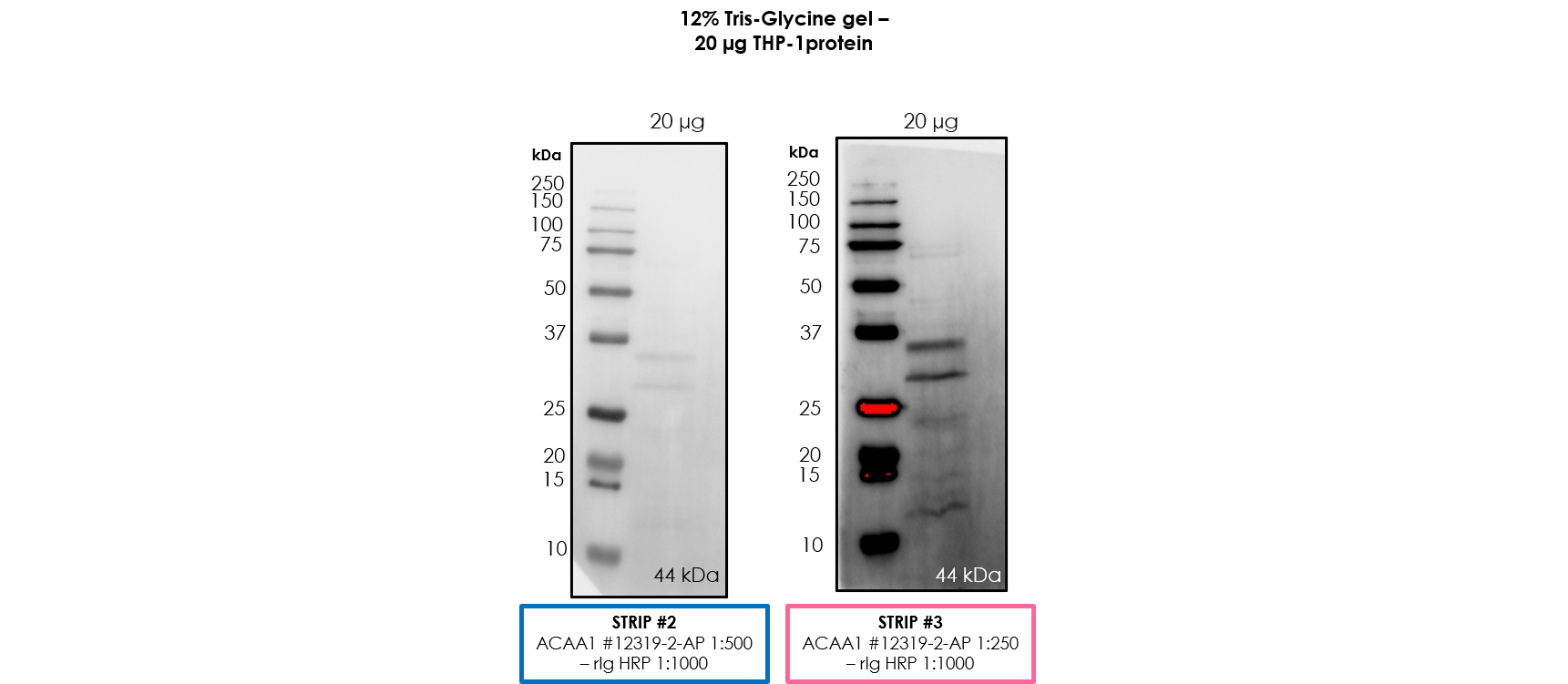 |
FH Tom (Verified Customer) (04-01-2022) | 1:1000 for 18 hours at 4 degrees
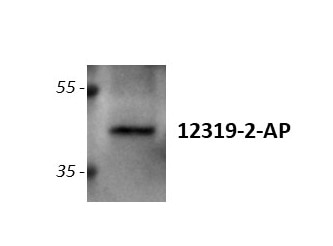 |
